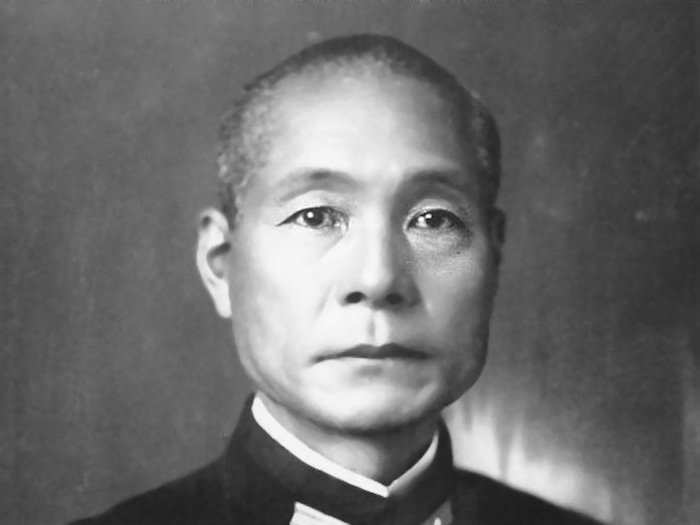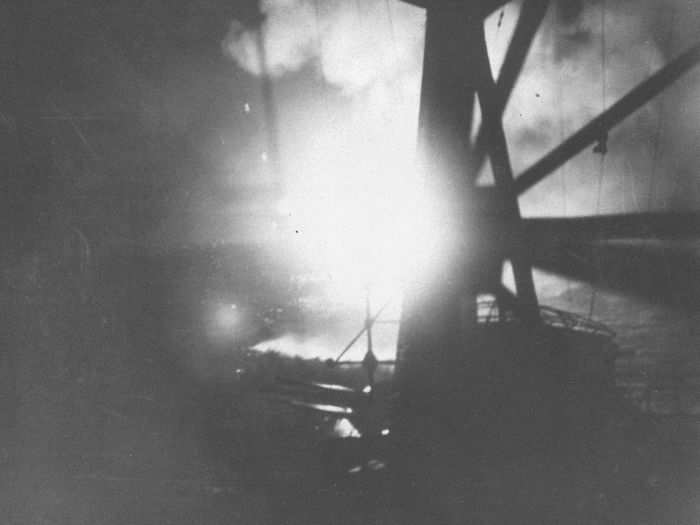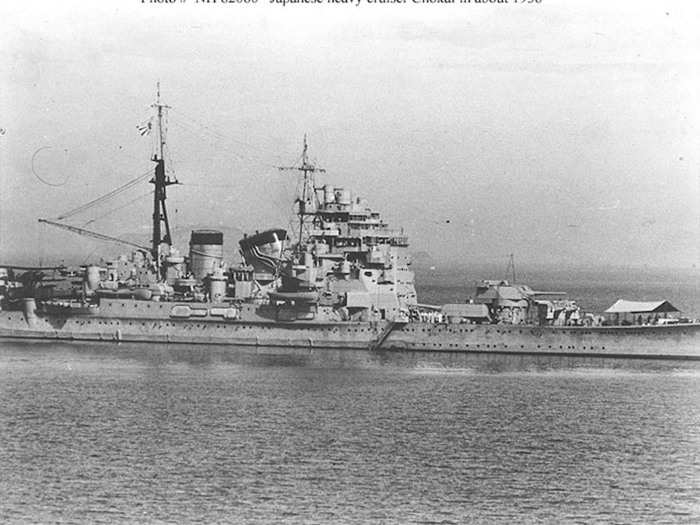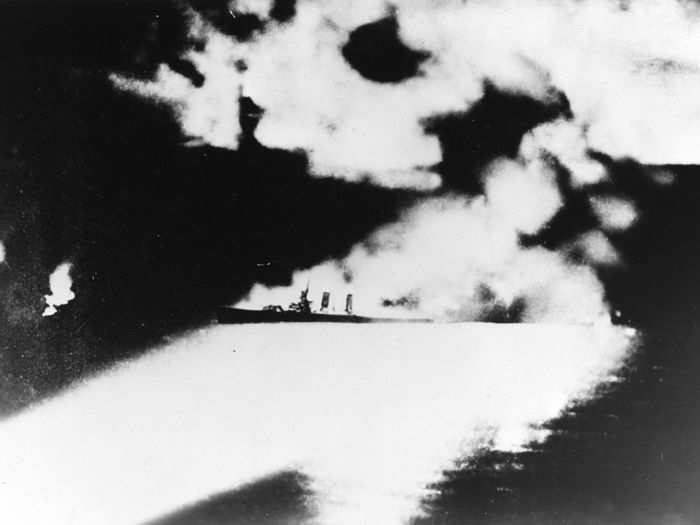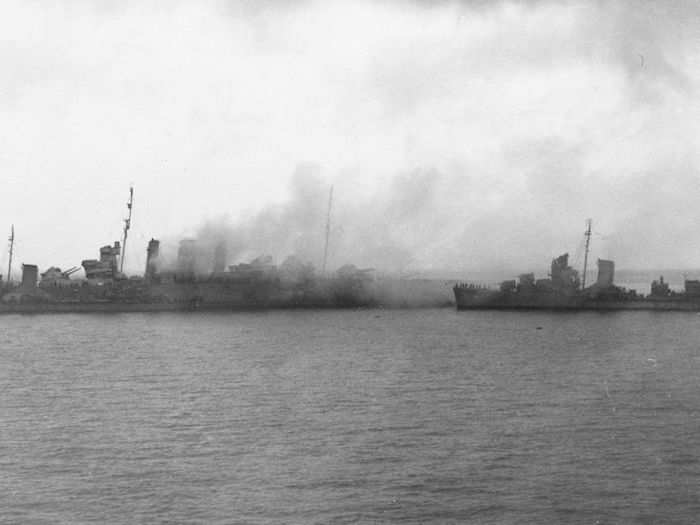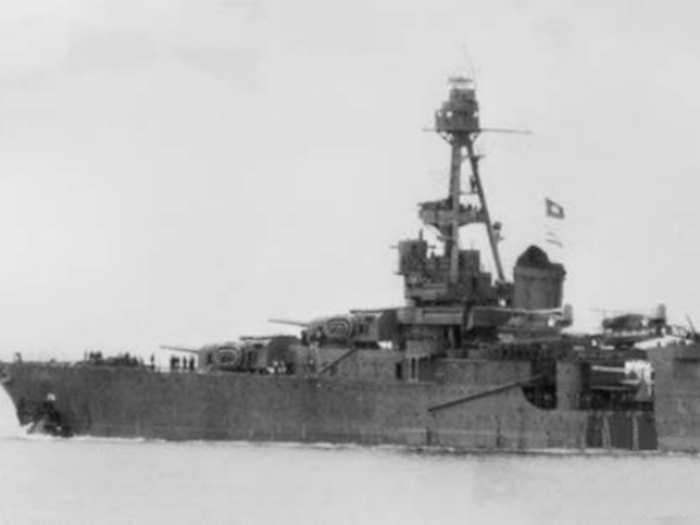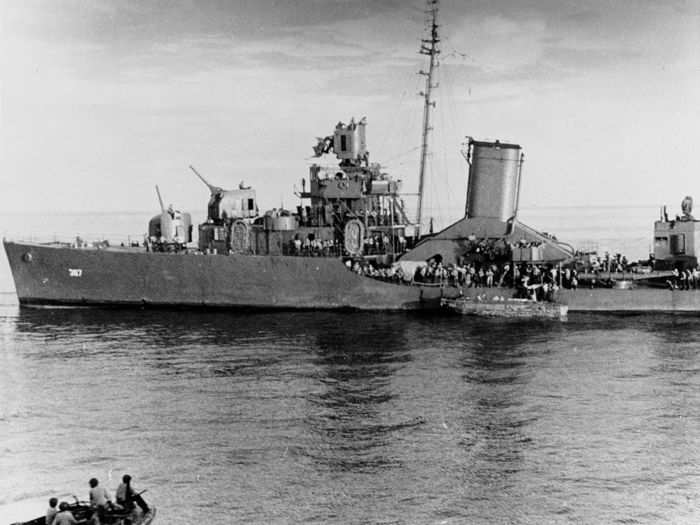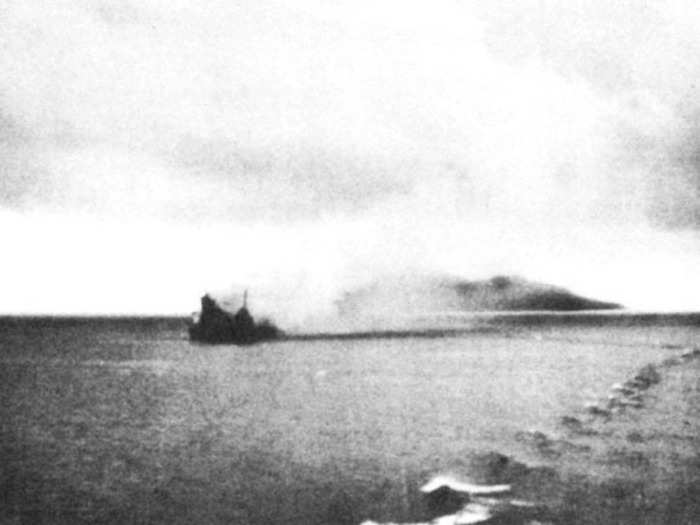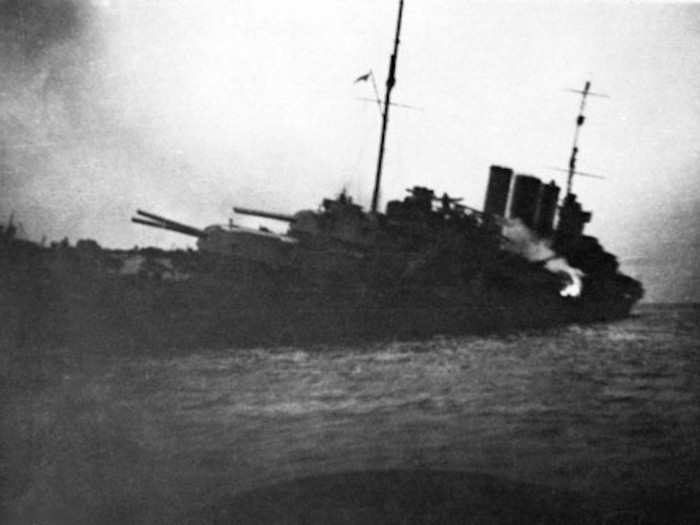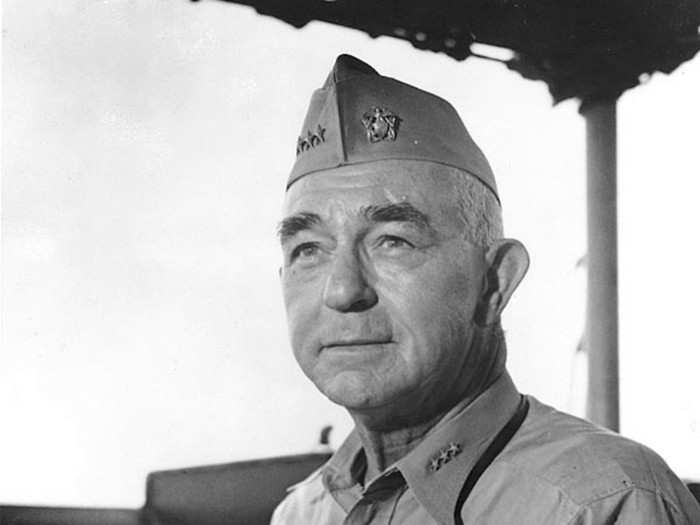In the course of the battle, Mikawa's column would sink the USS Vincennes, the USS Astoria and the USS Quincy.
The Japanese column, on the other hand, only suffered minor damage to the Chokai, Aoba, Kinugasa cruisers, as well as the Yubari and Tenryu destroyers.
Source: US Navy
And the Allies lost 1,077 sailors, while the Japanese only lost somewhere between 58 and 129 sailors.
With the Allied transport and cargo ships unprotected, Admiral Richmond Turner ordered their withdrawal, leaving the US Marines stranded and unsupplied on Guadalcanal for nearly three months.
But Mikawa also mistakingly removed his column, worried that American aircraft carriers were in the area, of which the US Navy analysis took notice.
"Content with a tactical success [Mikawa] failed to exploit the strategical situation by destroying the transports and cargo ships," the analysis said.
"He had such apprehension of carrier-based air power as to allow it to seriously affect his judgment," the analysis added. "This apprehension was principally responsible for his decision to retire and it may have been responsible for his decision to attack the screening forces in lieu of the transports and cargo ships."
Source: US Navy

